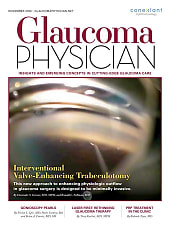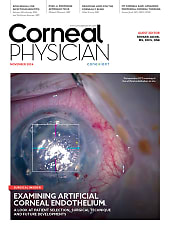Nesvategrast (OTT166), a novel, selective RGD integrin inhibitor developed as an eye drop for patients with diabetic retinopathy (DR), did not meet its primary or key secondary efficacy endpoints in the phase 2 DR:EAM clinical trial, OcuTerra Therapeutics reported in a news release.
“We are disappointed that the topline data on nesvategrast from our Phase 2 DR:EAM [Diabetic Retinopathy: Early Active Management] clinical trial did not demonstrate a statistically significant impact on severity or progression of diabetic retinopathy,” said Kerrie Brady, CEO and president of OcuTerra. “I want to wholeheartedly thank the patients and investigators who participated in the DR:EAM trial as well as the OcuTerra team for making this study possible.”
DR:EAM (ClinicalTrials.gov identifier: NCT05409235) was a multicenter, randomized, double-masked clinical trial designed to assess the safety and efficacy of a high and low dose of daily topical administration of nesvategrast vs placebo for 24 weeks in 225 adult patients with moderately severe to severe nonproliferative diabetic retinopathy or mild proliferative DR with minimal vision loss. Topline data reported March 14 showed that nesvategrast was safe and well tolerated. However, the data failed to demonstrate a statistically significant improvement on the diabetic retinopathy severity scale (DRSS) for patients treated with nesvategrast compared to the placebo group, the primary efficacy endpoint. Data also did not show nesvategrast to have significant impact on the progression of disease as measured by DRSS, a key secondary endpoint.
Analysis of the development of vision-threatening events (VTEs), another key secondary endpoint, stratified by level of disease severity at baseline, demonstrated a statistically significant improvement in patients with DRSS level 47 and 53 (moderately severe, and severe non-proliferative diabetic retinopathy respectively) at baseline in preventing the onset of VTEs by week 24 (P=0.045).
OcuTerra reports that it will continue to analyze DR:EAM secondary endpoints and other measures in order to plan strategic alternatives. “We plan to review the full dataset from the DR:EAM study to evaluate the future of the nesvategrast program,” Brady said.








